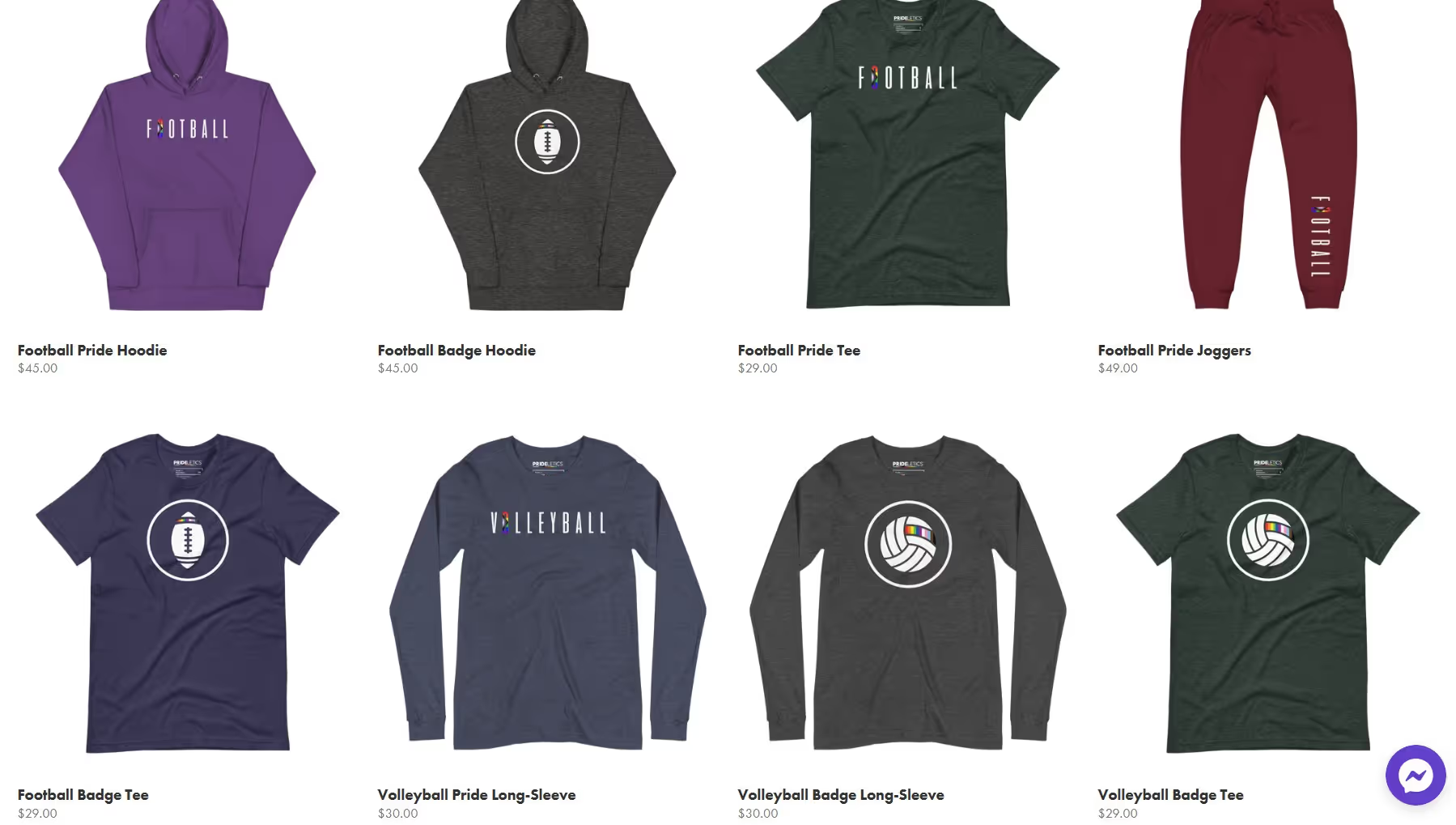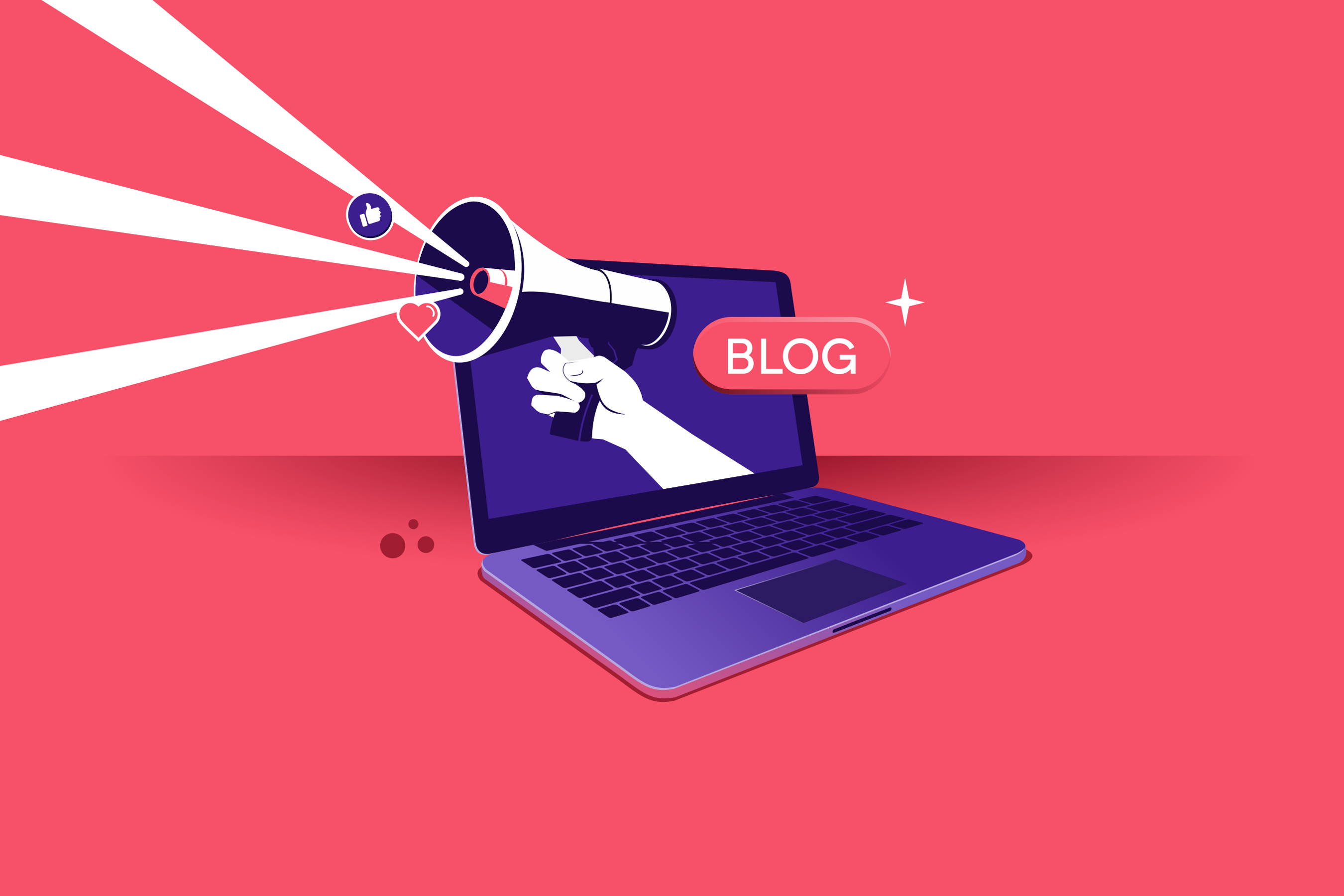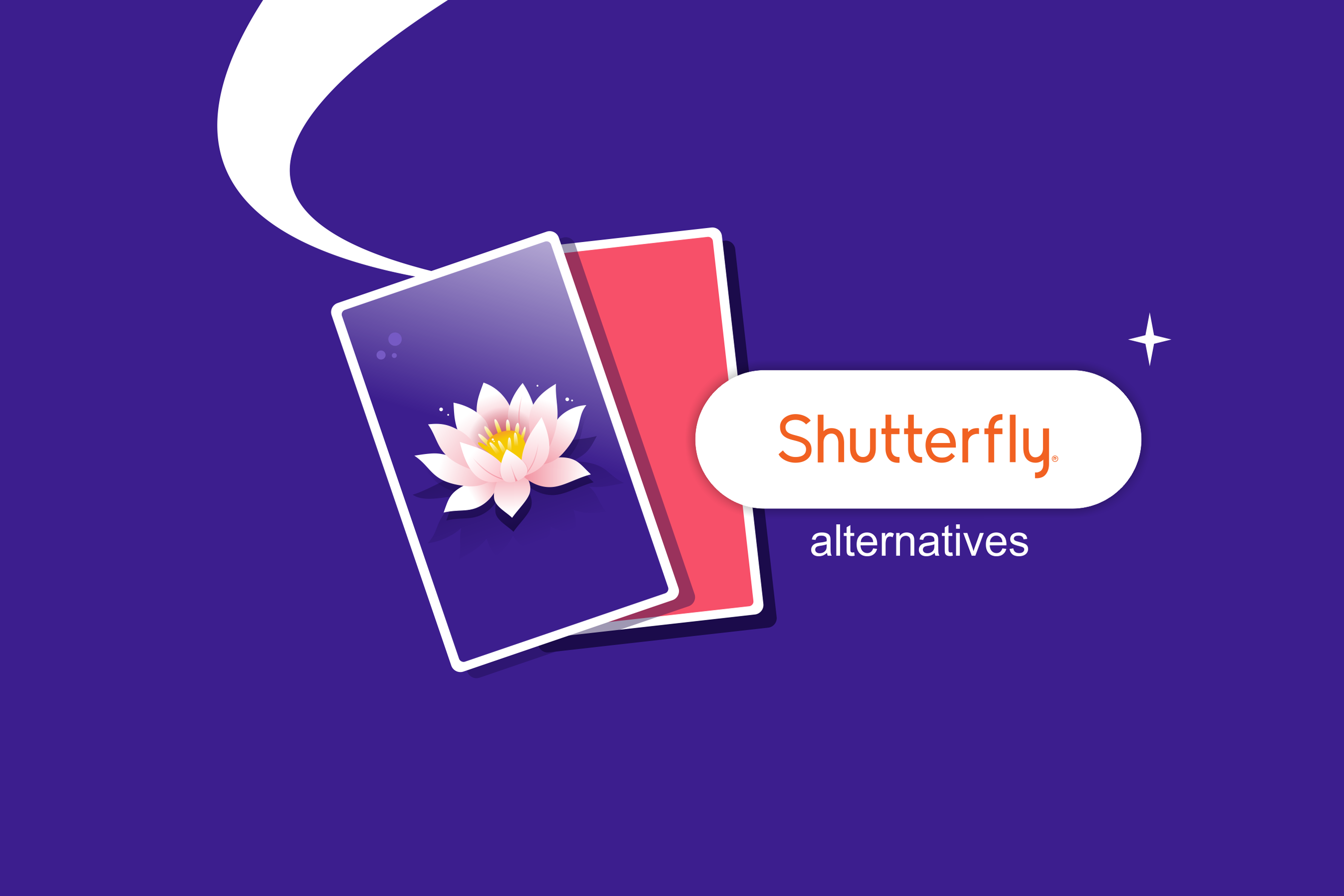Many praise print-on-demand as one of the ultimate ecommerce hacks for small and large businesses. And that explains why the market is expected to grow exponentially in the coming years.
According to a report by Market.us, the global print-on-demand market size is projected to grow at a CAGR of almost 28% from $5.04 billion in 2023 to a whopping $43.07 billion by 2032.

But what is print-on-demand and how can your business benefit from it?
In this post, we’ll answer these questions, covering everything you need to know, from how it works to how you can get started with it.
Let’s go.
What is Print-on-Demand?
Print-on-demand (POD) is an innovative ecommerce business model where customized white-label products, such as clothing or home decor, are created and sold on an as-needed basis.
This way, you eliminate the need for managing large-scale inventory, creating room for more flexibility and efficiency in meeting demand.
POD allows you to outsource your production processes after sales, from printing to packaging to shipping products to your supplier. This frees up your plate for other tasks and keeps operational costs low.
Meanwhile, a common mistake some make is to confuse print-on-demand with dropshipping. They are not the same.
For context, dropshipping only allows you to sell pre-made products from a third-party supplier that handles everything from production to fulfillment for you. Here’s an example of a dropshipping product page.

Image via More than a backpack
On the other hand, a POD business gives you more control over the quality and appearance of your products since you can customize them with your designs and branding.
This Prideletics product lineup is a great example of print-on-demand at work.

Image via Prideletics
The print-on-demand business model is perfect for ecommerce entrepreneurs who want to offer unique and personalized products with minimal logistical or cost requirements.
It is also a great way to test or try out new business ideas or products without spending too much on inventory.
Also Read:
- Printful vs Printify: Which Print On Demand Platform Wins in 2025?
- How to Make Money on Etsy: Complete 2025 Guide
How Does Print-on-Demand Work?
As we’ve seen, print-on-demand is a simple and convenient way to create and sell custom products online. But how does print-on-demand work exactly?
Here’s an A-Z breakdown of how print-on-demand works.
1. Product Design and Creation
The process of POD begins with the creation of a product design. This is the stage where you unleash your creativity and showcase your brand identity. Your design can be anything from logos to slogans to images and patterns.
Unique designs can be created through the use of graphic design software, such as Photoshop, Illustrator, or Canva.
While at it, keep in mind that:
- The designs must be original and not infringe on any intellectual property rights.
- The designs should be of high quality and resolution.
- The design must be compatible with the product specifications and dimensions of your print-on-demand service provider.
2. Integration with a POD Platform
The next step in the print-on-demand process is to integrate your online store with print-on-demand services or service providers.
POD platforms offer a range of products, such as clothing items, accessories, or home decor. These companies handle the printing and fulfillment of your orders, as well as customer support in rare instances.
Choosing a print-on-demand service provider to integrate with requires that you juxtapose features and offerings to find what works best for you. Some of these features and offerings include product quality, shipping options, pricing, and, of course, integration features.
Podbase offers great print-on-demand services, such as exceptional product quality and speedy product turnaround. All this and more come at a reasonable price range, starting at $6 per unit.
3. Listing Products for Sale
Once you have integrated your online store with a print-on-demand service provider, start listing your products for sale. You can do this by uploading your designs to the POD service provider and choosing the products you want to print them on.
Once this is done, your products are ready to be listed for sale on your online store.
Also, make sure that you promote your products once they go live in your store. Use marketing strategies like social media marketing, email marketing, SEO, and influencer marketing to drive traffic to your store.
4. Fulfilling a Customer Order
When a customer places an order on your online store, the order details are automatically sent to your print-on-demand service provider.
At this stage, there is little to no involvement required from your end, as the POD service provider assumes responsibility for the entire fulfillment process.
This effectively relieves you of the need to manage inventory or stock, as products are only produced when you receive an order. That too is taken care of by your POD service provider.
5. Printing and Fulfillment
Upon receiving the order, the POD service provider will print the design on the chosen product using methods like direct-to-garment (DTG) printing or all-over printing (AOP).
DTG printing involves the use of a special printing process to print the design directly onto the product, just like this:

Image via Instagram
On the other hand, AOP printing involves using a large-scale printer to print the design on a piece of fabric that is then cut or sewn into the product. Here’s a great example of an AOP-printed t-shirt from Instagram.

Image via Instagram
Keep in mind that the printing process could take a few days, depending on the product type, order volume, or POD service provider's capacity.
Once it’s ready, the product is packaged and shipped directly to the customer with your brand name and design.
6. Payment and Profit
Customers make payments for purchases through your online store using a designated payment channel, such as PayPal, Stripe, or credit card.
The payments are then transferred to your ecommerce platform's account, from where you can transfer the funds to your bank account.
Before that, the POD provider must deduct the costs associated with production and shipping from your ecommerce platform's account.
As such, your profit margin is determined by the difference between the customer's payment and the charges imposed by the POD service provider.
7. After-Sale Service
Post-sale services are typically handled by you, the seller. This can include customer relations, questions or complaints, and refunds or exchanges.
However, you should know that some print-on-demand service providers offer support in this area as well.
If you are interested in outsourcing post-sale services too, be sure to check the terms and conditions of your POD provider. There, you can see what kind of after-sale services it provides and how it handles disputes or issues.
Advantages of Print-on-Demand
You would agree that printing on demand is a super convenient and cost-effective way to create and sell custom products online. Print-on-demand offers many advantages over traditional ecommerce models, such as the ones listed below.
No Inventory Management
Managing inventory is one of the biggest challenges in traditional ecommerce. You have to purchase or produce your products in advance, store them in warehouses, and keep track of stock.
This process is not only costly and time-consuming but also poses inherent risks.
Using the print-on-demand ecommerce model makes these concerns obsolete. With POD, products are only printed or produced after a sale is made, eliminating the need to deal with excess stock, unsold items, or waste.
Apart from that, you can bypass storage fees and overhead, inventory taxes, and the risks associated with managing inventory.
Minimal Upfront Investment
Traditional ecommerce models typically demand robust upfront investment in areas like product acquisition, equipment, materials, and labor.
However, this can pose a significant barrier to new entrepreneurs with limited capital or those aiming to test new ideas or products.
With print-on-demand, however, you don't have to make significant financial commitments upfront. This gives you room to explore and grow and it allows the business to pay for itself with little to no risk.
That said, there are a few investment costs to consider, such as:
- Advertising
- Plugins and apps
- Online store hosting
- Domain name registration
- Online store theme or design
- Payment gateway subscription
- Ecommerce platform subscription
Product Offering Flexibility
Print-on-demand offers a lot of flexibility in product offerings, giving you a wide range of customizable products.
But what is print-on-demand if you can’t make changes and adjustments at the drop of a hat? POD gives room for spontaneous changes and updates to your designs or products, when necessary.
This allows entrepreneurs to easily test new products or enter different markets, responding promptly to customer feedback and market trends.
Types of Products Available in POD
One of the best things about print-on-demand is that you can print your designs on almost anything, from apparel to tech gadgets. Think of it this way: if it has a printable surface, it can house your design.
Here are some of the types of products available in POD and some examples of each:

Image via Prideletics
- Apparel:
- T-shirts
- Hoodies
- Dresses
- Leggings
- Tank tops
- Bikinis
- Sweatshirts
- Yoga pants
- Jackets
- Skirts
- Shorts

Image via Prideletics
- Accessories:
- Necklaces
- Bracelets
- Wristwatches
- Earrings
- Rings
- Hats
- Beanies
- Scarves
- Tote bags
- Backpacks
- Pouches
- Socks

Image via Podbase
- Tech accessories:
- Phone cases
- Wallet cases
- Bluetooth speakers
- Bluetooth earphones cases
- Laptop cases
- Stickers
- Mousepads

Image via Podbase
- Homeware:
- Throw pillows
- Photo books
- Towels
- Wall clocks
- Mugs
- Pet products
- Candles
- Water bottles
- Stationary
- Wall art
- Canvas
- Posters
As mentioned earlier, these are just some types of products available in POD but there are a lot more options to choose from.
Give your print-on-demand business a chance at success by using a reliable and professional POD service provider like Podbase.
Try Podbase today and see the difference
POD Fulfillment Services vs. Marketplaces
Let’s assume you want to choose a POD service provider for your ecommerce business. Broadly speaking, you have two main options available to you, which are:
- Fulfillment services
- Marketplaces
What’s the difference?
Fulfillment services are POD service providers that integrate with your online store and handle everything after sales. They only produce when sales are made.
After production, you can sell your products on your store or an ecommerce platform of your choice, such as eBay, Amazon, or Etsy. Some examples of fulfillment services are Podbase, Printful, Printify, and Gelato.
Alternatively, marketplaces are POD service providers that host your products on their own websites and handle the printing and shipping of your orders.
Unlike fulfillment services, marketplaces keep stock of products and offer premade products to their customers; much like a literal marketplace.
Marketplaces may also provide free marketing and promotion for your products to their large customer base.
In a nutshell, here are the pros and cons of POD fulfillment services and marketplaces:
PROS
Fulfillment services
- More control over your brand and products
- More flexibility and scalability
Marketplaces
- Less responsibility and work
- Less competition and risk
CONS
Fulfillment services
- More responsibility, work, and fees
- More competition and risk
Marketplaces
- Less control over your brand and products
- Less flexibility and scalability
Ultimately, choosing between a POD fulfillment service and a marketplace comes down to your personal preferences, goals, and resources.
However, you might want to consider a hybrid approach and use both a fulfillment service and a marketplace to maximize your reach and revenue.
Because, let’s face it, what is a print-on-demand store if it doesn’t have versatility and flexibility in options?
Starting a POD Ecommerce Store
Let’s assume you’re starting a print-on-demand business. What do you do next?
Here’s a roadmap on how to start a print-on-demand business.
1. Choose a POD Provider
From the get-go, you want to choose a print-on-demand provider to print and ship your products to your customers. Here are some factors to consider when choosing one:
- Pricing and profit margin
- Product range and quality
- Integration and compatibility
- Printing and fulfillment speed
- Customer service and support
One of the print providers that meet all these criteria is Podbase. Podbase offers you:
- A wide range of high-quality products
- Friendly and helpful customer service
- Quick and efficient printing and fulfillment
- Competitive and transparent pricing (from $6)
- Easy and fast integration (including WooCommerce, Etsy, Bigcommerce, and Shopify)
2. Test Product Quality
Once a print provider is sorted, test the quality of your products before you start selling them. This will ensure that the products meet your expectations and standards and that your customers will be satisfied.
Order samples of your products from Podbase or any other print provider and check for:
- Print quality and accuracy
- Product quality and durability
- Product fit and size
Testing before distribution can help you avoid potential complaints from your customers or a high return rate.
3. Create Mockups
The next step is to create mockups of your products to display on your online store.
Mockups are realistic images or demos of your products, showing how your designs look on them. You can create mockups using editing tools like Photoshop, Placeit, or Vexels.
However, to create mockups quickly and without hassle, use the mockup generator that comes with your print provider. Here’s a look at a Podbase mockup.

Image via Podbase
4. Market and promote your products
Once all is set and good to go, start marketing and promoting your products to drive traffic and sales to your online store.
Employ marketing and promotion strategies, such as:
- Social media marketing (advertising on Facebook, Instagram, X, TikTok, or YouTube)
- Email marketing (promotional emails, newsletters, and re-engagement emails)
- SEO (Search Engine Optimization)
- Paid ads (Google Ads or Bing Ads)
Putting It Together
And there you have it—everything you need to know before starting a print-on-demand business.
Print-on-demand is a simple, cost-effective ecommerce model for creating and selling custom products online.
It allows you to design products, such as clothing, accessories, and homeware, and sell them to your customers without lifting a finger all through the production or delivery process.
To start your own print-on-demand business, you can follow a clear-cut roadmap that includes:
- Choosing a print provider, such as Podbase, that suits your ecommerce needs and goals.
- Testing the quality and samples of your products before selling.
- Creating mockups of your products for easier inspection.
- Marketing and promoting your products to drive traffic and sales.
Interested? Give Podbase a try today.









